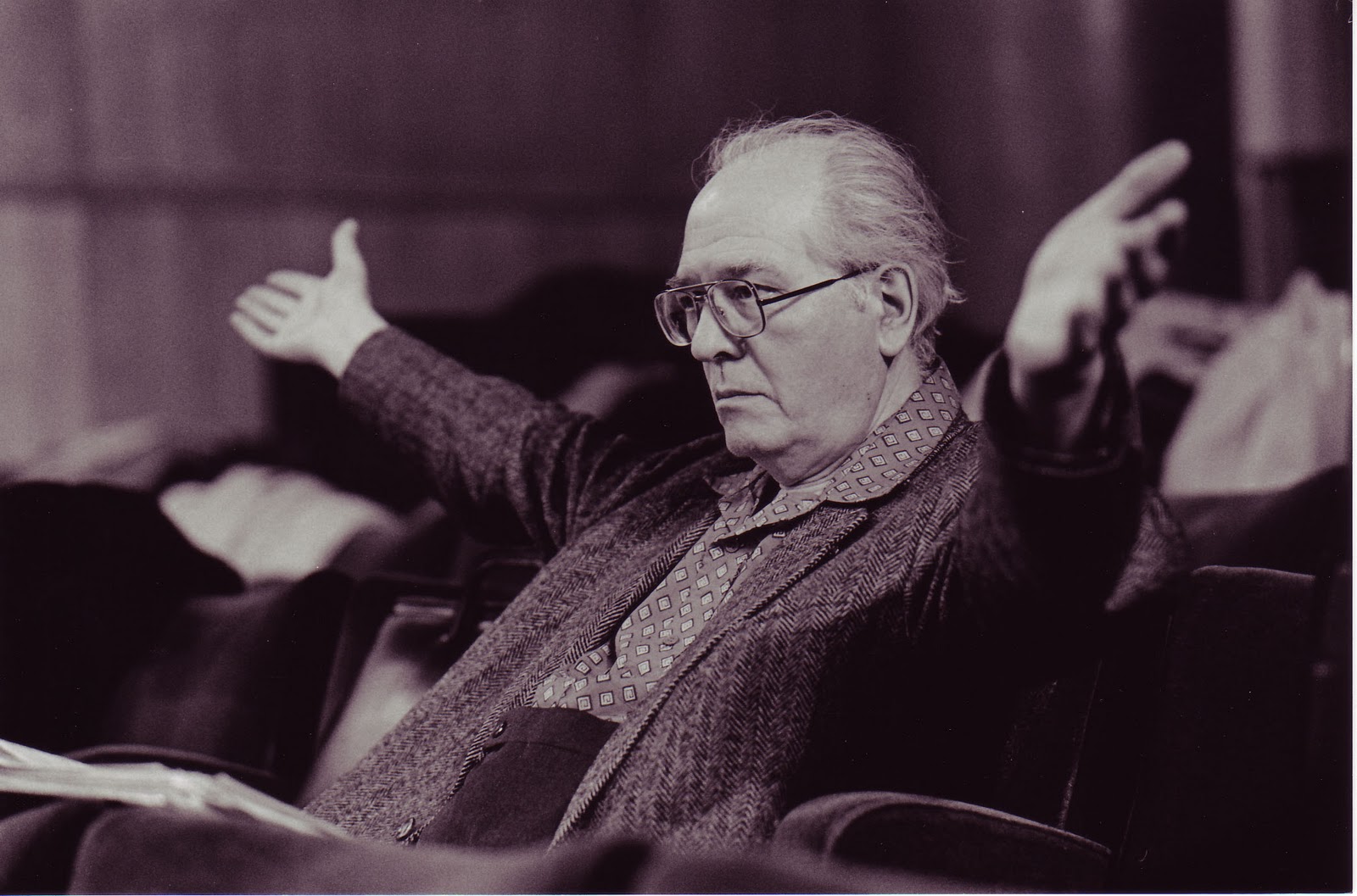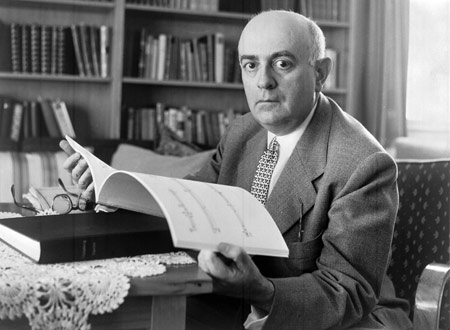As anyone who has suffered through a 20th century music history class is aware, ‘Art Music’, or modern classical music, is not the type of playlist you want to blast on Friday night, or at the gym, or on a road trip – pretty much anywhere except maybe an opium den, or an elitist prison. When hearing for the first time the strange and alienating sounds so beloved by modern composers, most people react with asking: Why? Why was this music, so deliberately unrelatable and even offensive, composed and performed? Answering these questions is out of the scope of this article (and there aren’t always good answers), but I will say that ultimately, all that modern and contemporary composers are attempting in their work is to find new and exciting techniques to make sound have an emotional and resonating effect on a human. Sometimes this means placing paperclips on the coils in a piano and rearranging the structural elements of a sonata. Other times this means throwing sticks onto a grid in the dirt and letting the music follow from that. It’s not always good, it’s not always successful, and it’s not always really innovative. But against this general sentiment of ‘Why’, today’s composers ask, ‘why not?’
These composers, however, are not alone in the struggle. What’s fascinating about the development of popular music in this decade is that these composers, stuck so firmly in the ‘weird’ end of the music spectrum, are receiving unsolicited help in their efforts from the garage-band, amateur-turned-headliner music makers enjoying the limelight of music festivals and avid fans. Electronic music, dubstep, and indie rap are actually rife with the techniques and sounds pushed by composers from the 1950’s on. Chances are, if you’re listening to Aphex Twin, XXYYXX, Odd Future, or Danny Brown, you’re embracing the sort of musical idioms and strategies that you would hear coming from a sparsely attended quartet premier in the basement of a university Music department. Here is a brief survey of how, against your knowledge or even will, Arnold Schoenberg and his avant-garde cronies are changing the way you hear music:
Drop the Key
Probably the most significant development of music in the 20th century was the abandonment of keys and the birth of ‘atonality’. This leads to a lot of 20th century music sounding very alienating and disorienting, especially to listeners expecting the sort of harmonies used by Mozart and Beethoven. But atonality is in fact not unique to ‘Art Music’: it features pretty prominently in, weirdly enough, electronica, dubstep and rap. But maybe it’s not so weird: I think these genres are actually perfect for progressive treatment of tonality because they offer listeners other things to focus on rather than pitch, freeing up the artists to do some funky things tonally. Dubstep offers us in those classic breakdown sections an assault of crunchy, mechanical sonorities that are so immersive in themselves we don’t listen in for a tonal center the way we would with a Justine Timberlake chorus – we focus instead on the development of these sonorities themselves, the same way John Cage wanted us to focus on the interesting sounds of his modified piano, not the pitches being played. Rap is even more conducive for atonality. The pitch system of a rapper’s verse doesn’t correspond to the notes of a scale in the first place – the human voice has its own, more limited and idiosyncratic range. So we don’t find it so alienating and out of place when the beat and the bass go off to explore atonal territory.
Some artists just dip their toes in the water, the way my favorite composer Olivier Messiaen did in the 1950s. The electronic texture of “About You” (XXYYXX) and the grimy beat of “Hive” (Earl Sweatshirt) both are (technically) tonal but are so ambiguous that it took me, despite four semesters of music theory, a half hour to figure out how the pitches in both operate (they both create ‘bicentric’ chords, drawing the listener to expect two different yet simultaneous resolutions, if you’re dying to know). The wubwubwub breakdown of “Equinox” (Skrillex) is complemented by a tonal melody, but presents phrases of wubs without any tonal grounding, with only the texture of the sound to focus on. Other artists plunge into the strange headfirst: “I Will” (Danny Brown) presents a ‘soundscape’ which never truly lets the listener center themselves on a single pitch, thanks to a weird harmonic texture leaping all over the chromatic scale. “Snow White” (Hodgy Beats feat. Frank Ocean) is, like much late 20th century music, constructed out of deliberately disorienting intervals and sonorities to disrupt whatever tonal center you much think you can hold on to. The song is a snow-storm of pitch and rhythm, with only Hodgy Beat’s angsty verse and Frank Ocean’s smooth voice to guide you through.
Weird Meter
Another big development that crosses genres from the haute to the underground is the effort to stretch, bend or defy conventions of meter and rhythm in music. For 20th century composers this meant new time signatures, reorganized musical structures, or even abandoning meter altogether. Doing so, abandoning the metrical conventions of contemporary music, makes demands on the artist to keep the music interesting and engaging enough for the listener to stay committed throughout. This is a challenge that again the avant-garde of electronica and rap have taken up well.
Dubstep and EDM are pioneers of a new musical structure, best characterized by the drop. For so long the landscape of popular music was dominated by essentially one structural form with minimal variation: Introduction, chorus, verse, chorus, verse, bridge, chorus, maybe a coda with a key change if the producer was feeling adventurous. Dubstep musicians (and some electronic artists) broke out of this mold boldly with a form that focuses not on a chorus but on a musically sophisticated structure based on tension and resolution, two staples of the modern composer’s toolbox. ‘The Drop’ of a dubstep song represents the culmination of a long and hopefully smoothly constructed buildup of dissonance and rhythmic acceleration (tension) leading to a climactic moment when for a second sound stops, to be dominated subsequently by an ear-filling torrent of sound, back in the initial meter and lush with consonance (resolution). Despite presenting such a climax early in the song, many dubstep songs stay interesting thanks to a structure that maintains this exciting tension-resolution pattern.
The New Sonorities
Probably the most ubiquitous development in hip hop and electronica that mirrors the developments of Art Music is one which has been latent throughout this article: the focus and prioritization of new sounds and textures. The flexible and amped voice of Kendrick Lamar, the funky hard-to-place metallic chants of Gold Panda, and of course those delicious wubwubwubs of Dubstep all around have listeners eager to consume new sounds, excited to ‘enter new sound worlds’, to phrase it as a music theorist, a dream long held by modern composers. These trends of course started way back – the Beatles experimented with South Asian music just decades after John Cage and his colleagues began incorporating Indian and Indonesian instruments and traditions into their works. The progressive and enveloping rock of The Dark Side of the Moon came just off the cusp of composers in the 60’s eschewing standard concert set ups and creating pieces for an orchestra seated around a circular room to create a fully immersive ‘sound world’ experience. And it continues strong to this day: Danny Brown’s new album Old presents a rapper who’s own voice becomes as versatile and pitched as a violin. Leaping up and down lines, bouncing off the beats with a succinct percussive sense and building intensity like a Coltrane solo, Danny Brown proves himself, like many of his peers (El-P, Killer Mike and Kool A.D.) to be ahead of the game musically – we don’t even have notation capable of capturing the musical intricacies of these verses. Listening to Danny Brown rap is akin to entering a hectic, new sonic environment, full of interesting new sonorities, colors and timbers to engage with.
This isn’t to say I’m about to burn my College’s pianos to the ground, dump my scores in the river and preach the musical virtue of avant-garde hip hop and electronica to my teachers. There is, I believe, always a time and a place for each kind of music, and though it may be relegated to the obscure and snobby, I still love the weird, pioneering and daring techniques modern composers of Art Music take to make innovative and challenging music. But I also love how this has influenced the world over in unexpected ways. Even when I’m head-bobbing in a grungy basement to that crunchy, dirty new single, I’m thanking that old homie Arnold Schoenberg and all his disciples for, in the face of all the obstacles, having the balls to ask “why not?” It’s paid off in ways he nor anyway could have imagined: a world of new and exciting music, across the spectrum.

